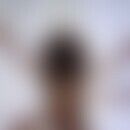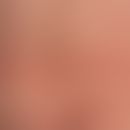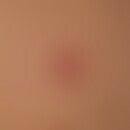Synonym(s)
HistoryThis section has been translated automatically.
John Fielding Crigler, US pediatrician
DefinitionThis section has been translated automatically.
Congenital disorder in the metabolism of bilirubin. The icterus results from an increase in the concentration of unconjugated bilirubin in the blood.
You might also be interested in
ClassificationThis section has been translated automatically.
2 forms of the Crigler-Najjar-Syndrome are distinguished:
- Crigler-Najjar syndrome type 1 (CN-1); autosomal recessive inheritance
- Crigler-Najjar syndrome type 2 (CN 2 = Arias syndrome); autosomal dominant inheritance
Occurrence/EpidemiologyThis section has been translated automatically.
Incidence: 0.6-1.0/1 000 000 newborns; m>w (Maruo Y et al. (2016)
EtiopathogenesisThis section has been translated automatically.
Crigler-Najjar syndrome is caused by hereditary genetic defects in the UGT1A1 gene on chromosome 2 with no or minimal activity of bilirubin UDP glucuronyltransferase. In a larger series it was shown that multiple mutations were detectable in 78.5% of patients (Maruo Y et al. 2016).
In Crigler-Najjar syndrome type 2 there is a residual activity of UDP-glucuronyltransferase of about 10%.
Depending on the form and extent of the mutation, the glucuronidation of bilirubin, steroid hormones (especially oestrogen) and drugs is disturbed.
LaboratoryThis section has been translated automatically.
Crigler-Najjar-Syndrome 1: Kernikterus already after birth. Unconjugated bilirubin is excessively elevated (> 20 mg/dl).
Transaminases, gamma-GT, AP) are normal; liver biospie: unremarkable histology. The bile is almost colourless. The enzymes of glucuronidation cannot be induced in this type even by the administration of potent enzyme inducers (phenobarbital, rifampicin). Accumulated bilirubin is metabolized only slowly and eliminated by faecal means to a too small extent. No urobilinogen is detectable in urine (Ebrahimi A et al. 2018).
Crigler-Najjar Syndrome 2: Unconjugated bilirubin not as excessively elevated (6-20 mg/dl) as in type 1. Values of 3-5 mg/dl can be achieved by enzyme induction using phenobarbital. As with CN-1, the other liver parameters and histology of CN-2 are inconspicuous.
TherapyThis section has been translated automatically.
The therapy depends on the type and severity of the disease. Particularly in the case of CN-1, the rapid initiation of therapy is extremely important.
Therapy of CN-1: The conservative therapy of Crigler-Najjar-Syndrome type 1 is based on 3 approaches:
- Phototherapy (this makes bilirubin water soluble)
- administration of tinprotoporphyrin, an inhibitor of heme oxygenase (reduces bilirubin increases)
- Administration of calcium carbonate and calcium phosphate (increases the secretion of unconjugated bilirubin into the intestine) These therapeutic approaches can extend life expectancy and delay the onset of neurological complications.
The most important therapeutic option is liver transplantation; it should be sought as early as possible.
Experimental:
- Allogenic transplantation of hepatocytes.
- Gene therapy: Gene therapeutic approaches are in preclinical development; gene transfer vectors using recombinant viruses, such as adenoviruses, have been successfully used to transfer the UGT1A1 gene into the liver of the Gunn rat model of the CNS (Ebrahimi A et al. 2018).
The therapy of CN-2 is based on the once daily administration of phenobarbital. Alternatively, rifampicin is also possible. By inducing the enzymatic activity, the bilirubin concentration in the plasma can be reduced to harmless levels.
Progression/forecastThis section has been translated automatically.
Crigler-Najjar syndrome type 1 manifests itself immediately after birth by excessive hyperbilirubinemia with marked skin and scleral icterus, which if untreated leads to kernicterus with severe neurological damage. Therefore, affected patients die untreated (without liver transplantation) in early childhood.
Crigler-Najar syndrome type 2 has a better prognosis. Kernicterus is rare, but the disturbing symptoms of skin icterus and significant pruritus significantly limit the quality of life of those affected.
Note(s)This section has been translated automatically.
There are no signs of hemolysis in this syndrome.
LiteratureThis section has been translated automatically.
- Ebrahimi A et al (2018) Crigler-Najjar Syndrome: Current Perspectives and the Application of Clinical Genetics. Endocr Metab Immune Disord Drug Targets 18:201-211.
- Maruo Y et al (2016) Genotype of UGT1A1 and phenotype correlation between Crigler-Najjar syndrome type II and Gilbert syndrome.J Gastroenterol Hepatol. 2016 Feb;31(2):403-8.
- Rowland A et al (2013) The UDP-glucuronosyltransferases: their role in drug metabolism and detoxification. Int J Biochem Cell Biol 45:1121-1132.
Incoming links (1)
Dubin-johnson syndrome;Disclaimer
Please ask your physician for a reliable diagnosis. This website is only meant as a reference.




